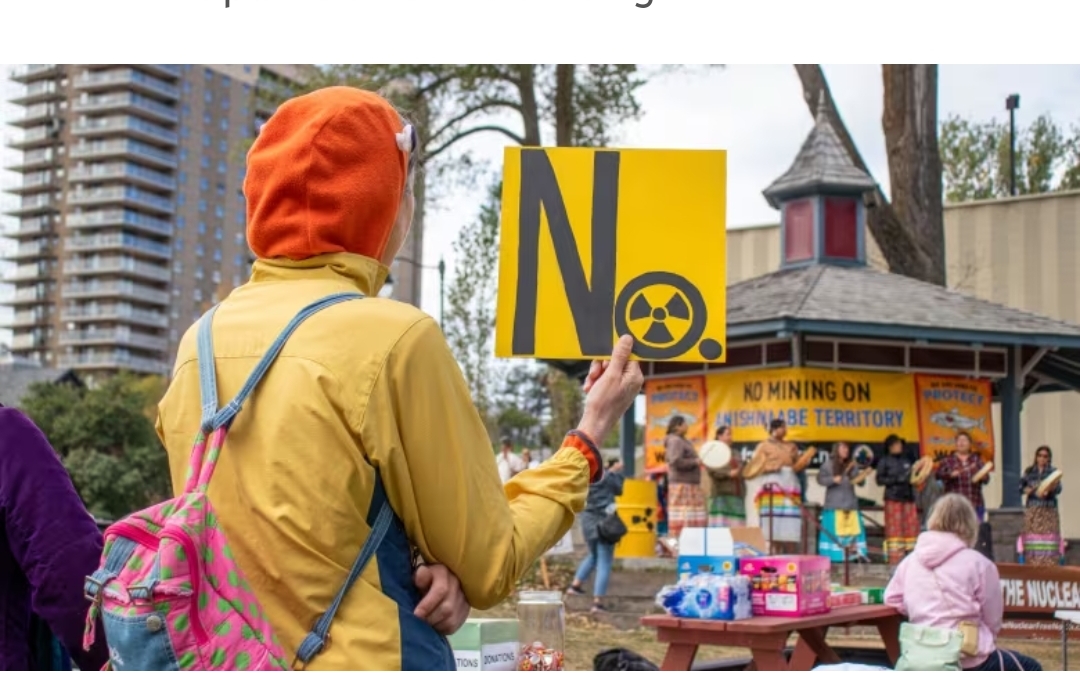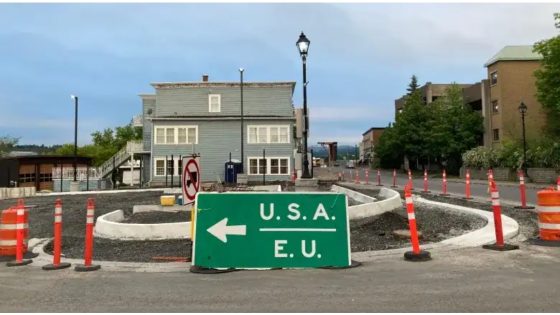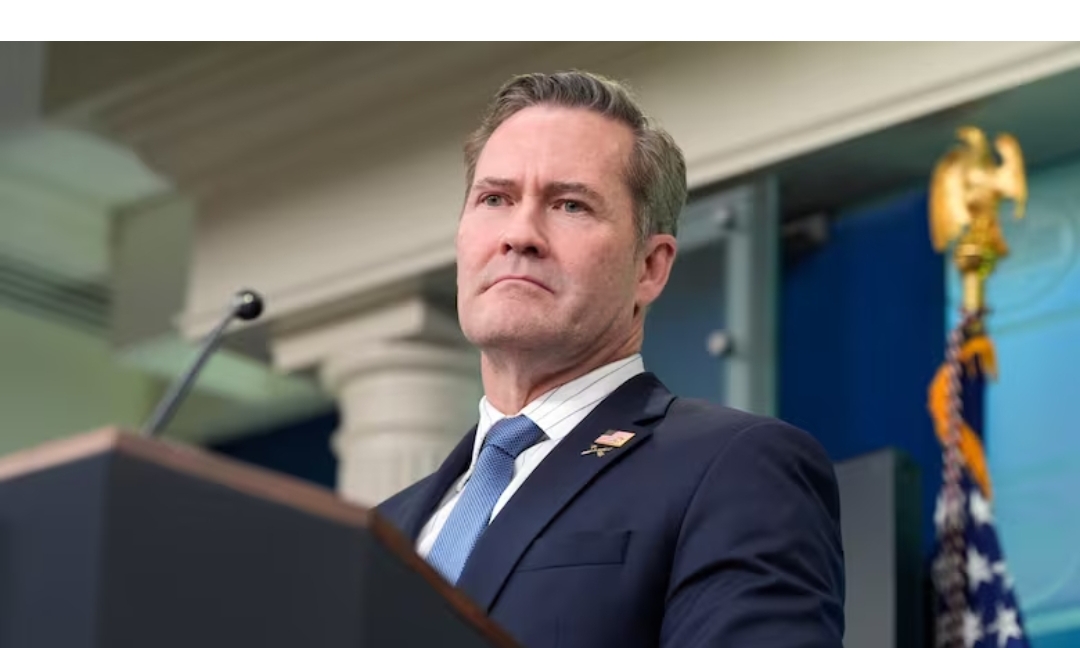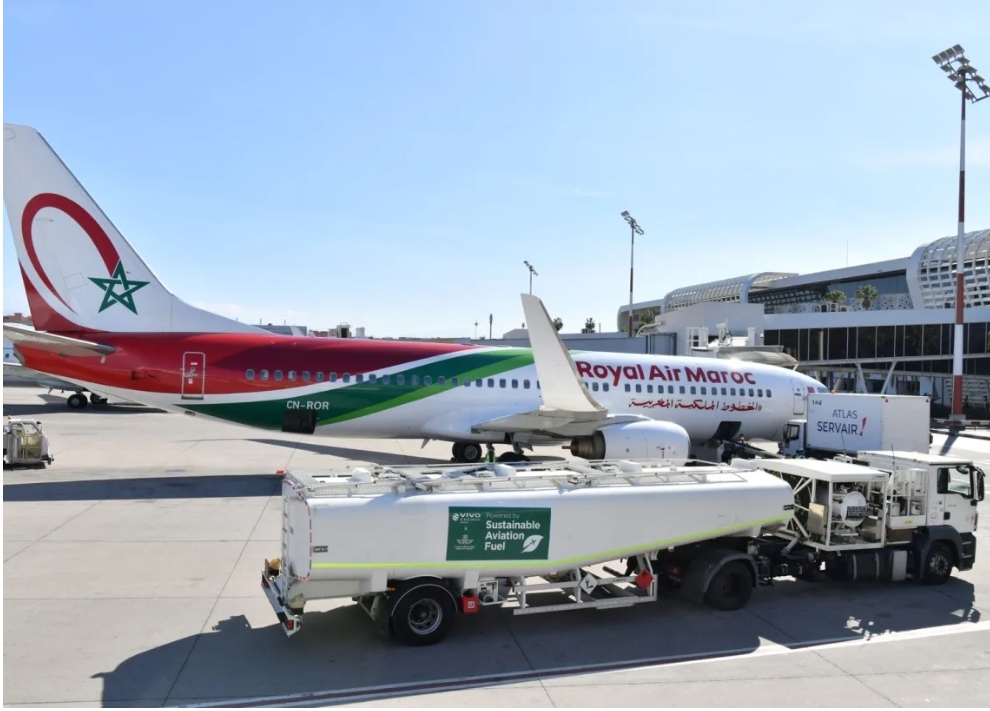Assahafa.com
The organization tasked with managing the storage of Canada’s nuclear waste in the country’s first deep geological repository is facing growing opposition in northwestern Ontario.
The Nuclear Waste Management Organization (NWMO) is expected to choose its preferred location by the end of this year, after narrowing it down to these two:
The Wabigoon Lake Ojibway Nation-Ignace area, about 250 kilometres northwest of Thunder Bay.
The Saugeen Ojibway Nation-South Bruce area in southern Ontario, about 130 kilometres northwest of London.
On Wednesday, a coalition of a dozen First Nations from northern Ontario led a rally in Thunder Bay, where more than 100 protesters gathered to sing, drum and voice their resistance.
Last week, the chiefs sent an open letter to Laurie Swami, president and CEO of the NWMO, saying “no” to the storage and transport of nuclear waste through their traditional territories.
CBC has heard a number of concerns from groups opposed to the project in recent weeks, pertaining to the waste’s transportation, the integrity of the storage containers, the safety of employees transporting the waste and working at the repository, and the environmental impact.
We the Nuclear Free North has tracked more than a dozen resolutions from municipalities, First Nations and other organizations expressing opposition to building the repository near Ignace.
Interview requests were made to the NWMO on Sept. 16, Sept. 22 and Sept. 30 about the project’s status and the planned rally in Thunder Bay, but a response was not received by publication time. However, the organization issued a statement on Wednesday in response to the letter from the chiefs.
“The interests, concerns and counsel of Indigenous peoples have been an integral part of the NWMO’s work from the very beginning. It began as we studied options for the long-term management of Canada’s used nuclear fuel, and it has continued throughout the implementation of all aspects of Canada’s plan,” it says.
“The NWMO is reaching out to the chiefs who signed the letter and offering to meet with them to share information and answer their questions.”
The organization has called the repository a $26-billion project that is expected to create hundreds of jobs. As of last fall, the repository’s construction was expected to start by 2033, with the site operational in the early 2040s.
Last year, leaders from Ignace, Wabigoon Lake and South Bruce were taken on separate trips, paid for by the NWMO, to tour the world’s first deep geological repository in Finland.
The American Nuclear Society reported last month that a trial run has begun at the Onkalo site and will last several months.
NWMO doles out millions to potential host communities
This summer, the Township of Ignace formally agreed to be a host community for the repository after 77 per cent of respondents in a community vote said yes to it.
Jake Pastore, outreach lead for the township and president of communications company Summit PCG, said the township is eagerly awaiting the NWMO’s decision, but hopes others in the region recognize the project’s benefits.
The NWMO has spent millions in both the Ignace-Wabigoon Lake area and South Bruce since engaging with the potential host communities over the years. The money has been spent on public education about nuclear waste and on local infrastructure projects.
Ignace received $1.5 million from the NWMO following the approval of its municipal hosting agreement; it also received $1.7 million through a multi-funding agreement with the organization last year.
Ignace council votes in favour of potential nuclear waste repository
Where will Canada put its forever nuclear waste dump? | About That
When asked whether the money may have impacted council’s final decision about the repository, Pastore said there “is no way” Ignace’s tax base could support such a large project without financial assistance.
“This is a normal part of business that happens in every community in Ontario, where there are significant players that are coming into the community, and where there’s very little resources to dedicate to the development of these mega projects.”
Wabigoon Lake prepares for vote
This November, Wabigoon Lake Ojibway Nation, which is about 70 kilometres northwest of Ignace and has just over 1,000 members, is holding a community referendum about the project.
Chief Clayton Wetelainen said it’s important to make sure all members of his community have their say.
“It’s a national problem that hasn’t been dealt with and that has been handed down to generations,” Wetelainen said of Canada’s nuclear waste.
While he didn’t indicate which way he’s leaning, Wetelainen said the community has received presentations from a number of groups over the years, including the NWMO and those opposed to it.
“The chief and councils of past and present have seen their duties as trying to get the most information to the membership, and make sure that our vote is an informed vote,” he said.
The community of Teeswater in South Bruce is expected to decide its willingness to house the nuclear waste repository in an online referendum later this month.
Improving highway safety
The waste’s transportation from southern Ontario to the northwest continues to be among the key concerns of anti-nuclear proponents in the region.
Last month, Thunder Bay’s city council voted down a resolution that would have seen it advocate for nuclear waste to be stored where it’s generated, a concept known as the proximity principle.
Instead, council has directed staff to review how hazardous waste and dangerous goods are transported through Thunder Bay, and what the city can do to work with the province to make the highway network safer.
Coun. Kristen Oliver, who’s part of the city’s intergovernmental affairs committee, said the decision came down to the fact municipalities have no control over what is transported through their communities.
“Collectively, the discussion then turned to what are we doing to ensure the highway infrastructure is safer, so that people within the municipal boundary and those outside the boundary have that same level of comfort and support when they’re travelling through or on our highway infrastructure as to what they’re on the road with,” Oliver explained.
That report is expected to come back to council next year.
Moving nuclear waste through traditional territories could face opposition, Ontario First Nation says
IN DEPTH
NWMO reaffirms safety of Canada’s 1st nuclear waste repository but there’s still heavy pushback
While it’s unclear when exactly the NWMO will choose its preferred site for the repository, Oliver said it’s important that the public has access to accurate information about the process as it unfolds.
“I think the challenge is trying to ensure that we’re using facts and evidence to make our decisions, and not emotions,” she said.
Source: cbc














